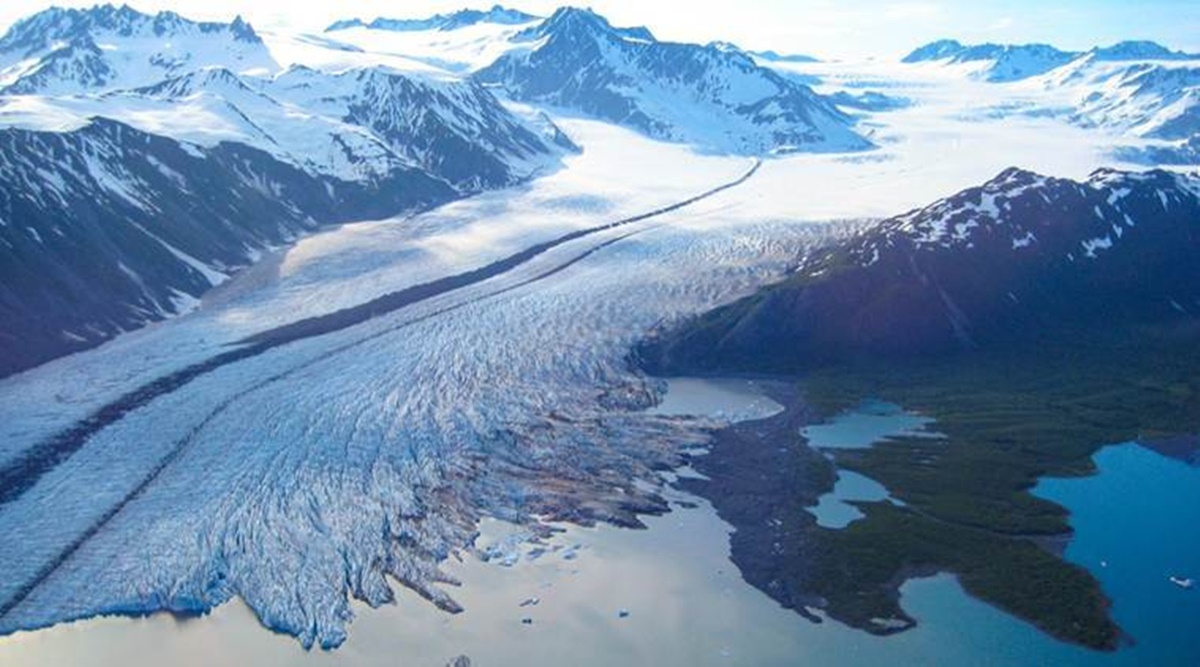Number of glacial lakes rising, as is threat of similar incidents
While new evidence from satellite images suggest that glacial lakes might not be the reason for Sunday’s flash flood in Uttarakhand, several studies in the last few years have highlighted the risk posed by such lakes in causing similar incidents.
These studies have taken note of the rapid increase in the number of glacial lakes due to a retreat in the glaciers caused by warming temperatures, and their potential to cause largescale flooding and destruction. The Kedarnath tragedy in 2013, for example, had involved a breach in a large glacial lake.
A 2005 inventory of glaciers and glacial lakes in the Himalayan region, documented by the Kathmandu-based International Centre for Integrated Mountain Development (ICIMOD) had identified 127 glacial lakes in Uttarakhand using satellite images.
When two scientists, then working with National Remote Sensing Centre in Hyderabad, did a similar exercise in 2015, they identified as many as 362 glacial lakes in the state — an increase of 235 lakes in ten years.
However, not all of these glacial lakes would have been created during this ten-year period. Most glacial lakes lie in remote locations and are inaccessible even to scientists, who have to rely on satellite images to identify and locate them. Modern technology and better resolution satellite imagery has enabled scientists to see these mountains in much greater detail, and discover many more lakes today.
“Glacial lakes are increasing, not just in Uttarakhand but in other regions of the Himalayas as well. We do not have year-to-year inventories to compare what exactly the increase is, but the trend is inescapable. This is happening because of retreating glaciers. And this has to be a cause of concern. Higher the number of such lakes, greater is the risk of incidents like the one we witnessed on Sunday,” said Syed Iqbal Hasnain, one of India’s best known glaciologists and Pro-Chancellor of Jamia Hamdard University.
“And looking at it from the other angle, the increase in number of glacial lakes also gives us an indication of how serious the problem of global warming and climate change is. It is a measure of how rapidly our glaciers are melting and retreating,” he said.
It is not just the number but also the size of the lakes that is increasing. As glaciers retreat more and more, the size of the lake increases corresponding, adding to its destruction potential.
The 2015 paper, authored by K Babu Govindha Raj and K Vinod Kumar and published in the Journal of Indian Society of Remote Sensing, notes that the retreat of the glaciers in Uttarakhand was noticeable since the 1960s. And the area under glacial lakes in Garhwal region of the state had increased by 33 per cent between 1990 and 2009.
“The formation and expansion of glacial lakes increase the melting of the glaciers, and in turn cause negative mass balance to the glaciers. The present analysis of expansion of some selected glacial lakes in Uttarakhand Himalayas shows an increase in the trend of formation and expansion of lakes… The proglacial lakes are growing faster in comparison with other (types of glacial) lakes… Enlargement and origin of lakes in such glacial valleys near human settlements and their potential for a lake outburst needs to be analysed critically,” the scientists wrote in their paper.
Not that these glacial lakes do not have any benefit. The glaciers and glacial lakes are a major source of water supply for agricultural and industrial use, and also for the generation of hydroelectric power.
However, their potential to cause massive flash floods is what makes them dangerous. Hasnain said it was for this reason that the more risky of these lakes needed to be identified and monitored regularly.
“The inaccessible areas where they are located makes their monitoring difficult. But it will have to be done. There have only been half-hearted efforts in this direction. We need to invest more money and human resources in the study of these systems and processes,” Hasnain said.



